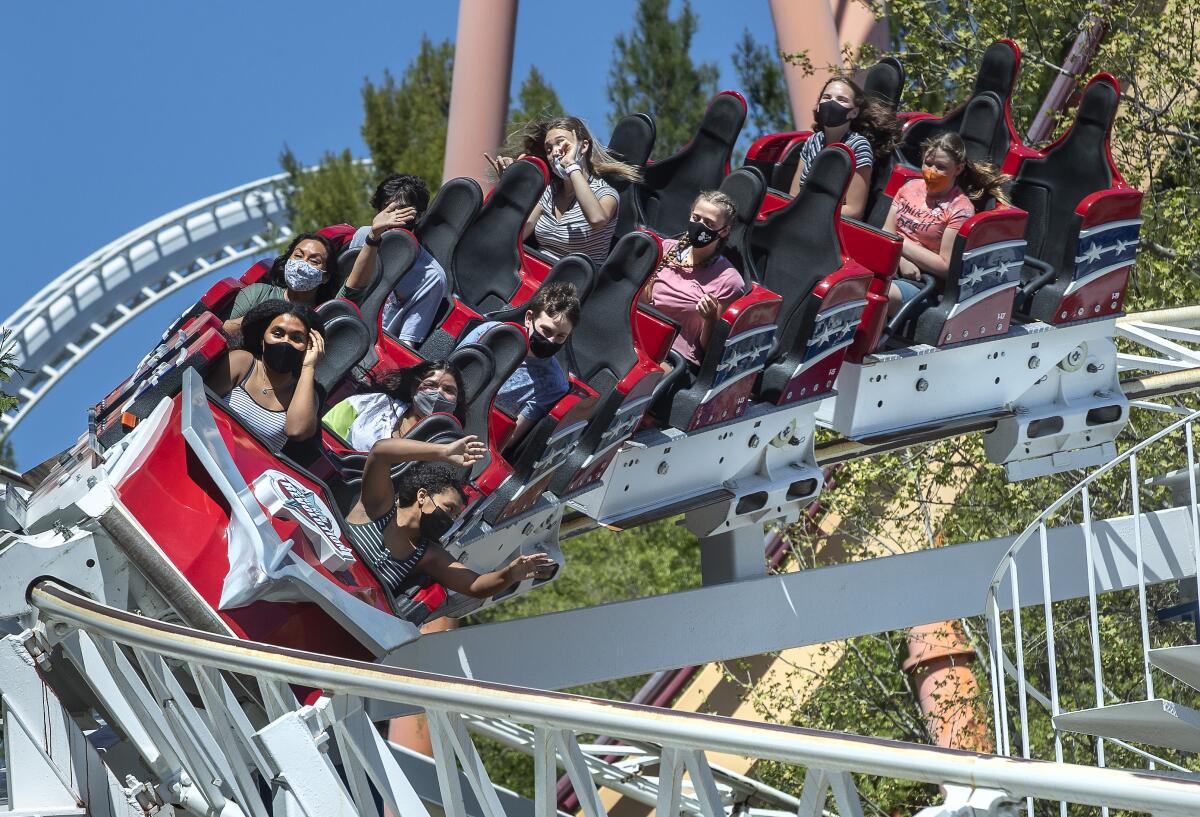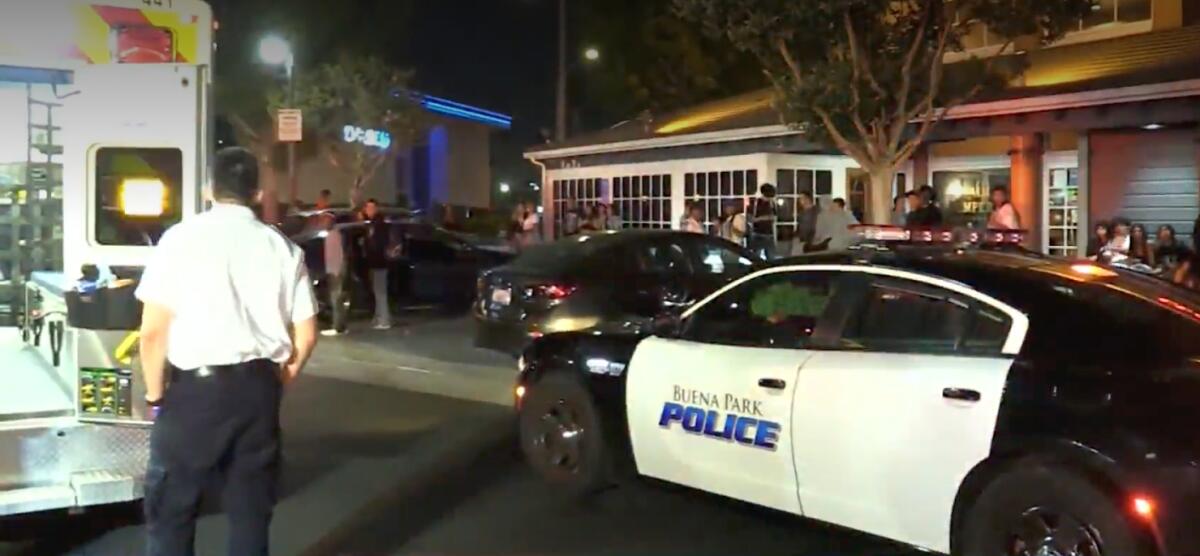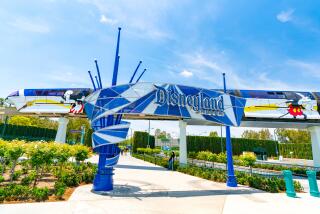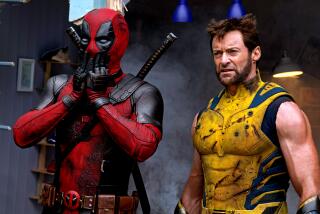Six Flags gets treated like a ‘day-care center for teenagers.’ Its CEO is not happy

- Share via
If you’re a teenage roller coaster enthusiast who takes advantage of free or discounted tickets to visit amusement parks, Six Flags Entertainment Corp. is making it clear it doesn’t want your business.
The nation’s largest regional theme park company, which operates Six Flags Magic Mountain in Valencia and 26 other parks across North America, is trying to attract more middle-class families by raising ticket prices and upgrading its food, beverages and amenities. At the same time, it is eliminating promotional deals, freebies, discounts and all-you-can-eat meal packages that have drawn teenagers and lower-income parkgoers.
Offering too many discounts and promotional deals has turned the amusement parks into “a cheap day-care center for teenagers,” Six Flags President and Chief Executive Selim Bassoul said during an August earnings report. He wants to put an end to that with what he calls his “premiumization initiatives.”
Ticket prices have yet to rise this year at Six Flags Magic Mountain, but Bassoul said other parks have already imposed higher prices and ended discounted food deals.
“Raising prices is no easy task for a company that has trained customers to expect discounts,” he said. “And in 2022, we have shocked the system with a significant increase in ticket prices.”
Daily tickets and annual passes vary depending on the access they offer, but in the first six months of 2022, per capita spending on admission at Six Flags parks rose by 29% compared with the previous year, from $29.67 per capita to $37.75, according to company reports.
For Magic Kingdom patrons, the added food costs come on top of jumps in ticket prices, up as much as 8% last year, and parking, which soared 20%.
The price increase comes as other theme parks grapple with crowding problems and brawls that threaten to turn away big-spending visitors, such as international tourists. Several fights broke out July 16 at Knott’s Berry Farm in Buena Park, prompting the park to adopt a chaperone policy that requires all visitors 17 or younger to be accompanied by an adult 21 or older on weekends and during its after-hours Halloween event.
A fight broke out in the Magic Kingdom in Walt Disney World in Florida in July over allegations of line cutting.

After pandemic closures that lasted as long as 13 months, many theme parks in the U.S. are now reporting attendance numbers in line with 2019. Many industry leaders, including Disney, are focused on boosting revenue and quelling crowding problems by trying to attract high-spending tourists and discouraging locals who visit often — making ride queues longer — but spend less.
At Six Flags Magic Mountain, the park last month opened its 20th roller coaster, Wonder Woman: Flight of Courage, the tallest and longest single-rail coaster in the world. The park’s Halloween celebration, starting in September, will feature a new haunted house, two new “scare zones” and a new haunted happy hour and buffet.
“We are continuing to execute our premiumization strategy by focusing on guests who are willing to pay more for a premium experience,” Bassoul said during his recent earnings report.
The reaction to Bassoul’s plan has been mixed, with some roller coaster enthusiasts calling it “classist” and others saying they are still willing to pay higher prices to visit the parks.
Jesse James Suazo, a 16-year-old roller coaster fan from Northridge, questioned the strategy since adults with smaller children are unlikely to take up many seats on the park’s marquee attractions: extreme roller coasters.
“The whole point of them doing this is just for money,” Suazo said. “The parks truly don’t care about if a teen or a family goes. It all boils down to maximizing profits.”
Sarah Anderson, an Orlando, Fla., resident who helps run a YouTube channel about roller coasters, called Bassoul’s comments about Six Flags customers “classist,” saying the plan will “price out those families and kids looking to have a fun time within their means.”
Derek Perry, a Los Angeles nightclub DJ and longtime coaster enthusiast, said he is skeptical of the changes because higher-paying families typically spend their vacation dollars at Disneyland or Universal Studios Hollywood whereas thrill-seeking teenagers and young adults prefer the adrenaline rush of the roller coasters of Six Flags parks.
“I understand the plan from a business perspective, but I don’t know how successful it will be,” he said, adding that he is willing to pay a higher price to continue to visit Six Flags parks.
Six Flags’ biggest challenge may be shaking off its decades-long reputation as a low-cost, thrill-ride hangout, according to industry experts.
“It’s not clear that the image of the chain will shift enough to attract higher-spending customers,” said Martin Lewison, a theme park expert and business management professor at Farmingdale State College in New York.
To upgrade the park’s image and draw higher-income visitors, he said, Six Flags may have to invest in new attractions — the type of multimillion-dollar rides offered at competitors such as Disneyland and Universal Studios Hollywood. “They don’t have that kind of budget,” Lewison said.
Though Six Flags has the rights to build attractions based on DC superheroes and Looney Tunes characters, Disney can theme attractions based on characters from Disney films, the “Star Wars” franchise, Marvel comics and Pixar, among others. Universal Studios can theme rides based on the Harry Potter franchise and dozens of Universal Studios movies, dating back decades.
John Gerner, a theme park consultant and managing director at Leisure Business Advisors, said Six Flags should stick with its thrill-ride niche and instead find ways to operate more efficiently.
“I’m not saying it’s impossible,” he said. “I’m saying it’s really challenging.”
Bassoul, who took over at Six Flags in November, told analysts recently that the strategy will shift the company “from what I call the Kmart, Walmart to maybe the Target customers.”
Six Flags representatives declined to respond to questions about the specific changes in pricing and food offerings at the parks.
Company earnings data show the shift may have already begun. Since the beginning of the year, attendance at the parks has dropped about 35% from what it was in 2019, which has allowed the company to reduce the number of full-time staff by 25%. The company says attendance has dropped in response to the recently adopted higher ticket prices and the end of discounted fares.
Although the parks took in fewer visitors, each park visitor spent 23% more in the second quarter of the year, compared with the same period in 2021, because of higher spending on food, merchandise and attendance tickets, according to company reports. In the same period, the company reported overall revenue of $435 million, which represented a decrease of $24 million, or 5%, compared with the second quarter of 2021.
“We have changed our customer base to today having more families coming in our parks,” Bassoul said during the recent earnings report. “And we know that families spend a lot more money in our parks than young adults. Our percentage of families in the first half that attended our parks, given our premiumization, has been tremendous.”
More to Read
Inside the business of entertainment
The Wide Shot brings you news, analysis and insights on everything from streaming wars to production — and what it all means for the future.
You may occasionally receive promotional content from the Los Angeles Times.












